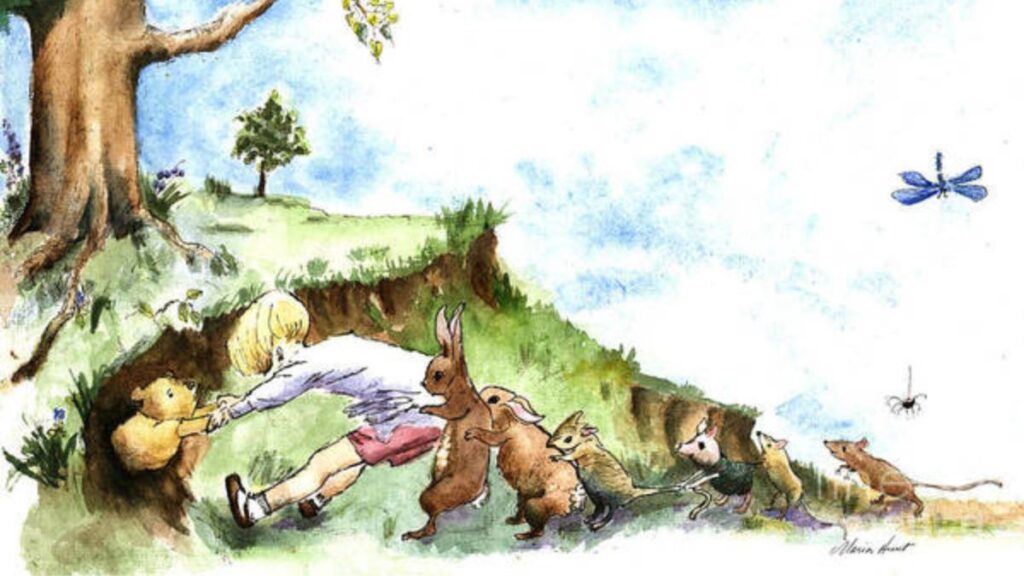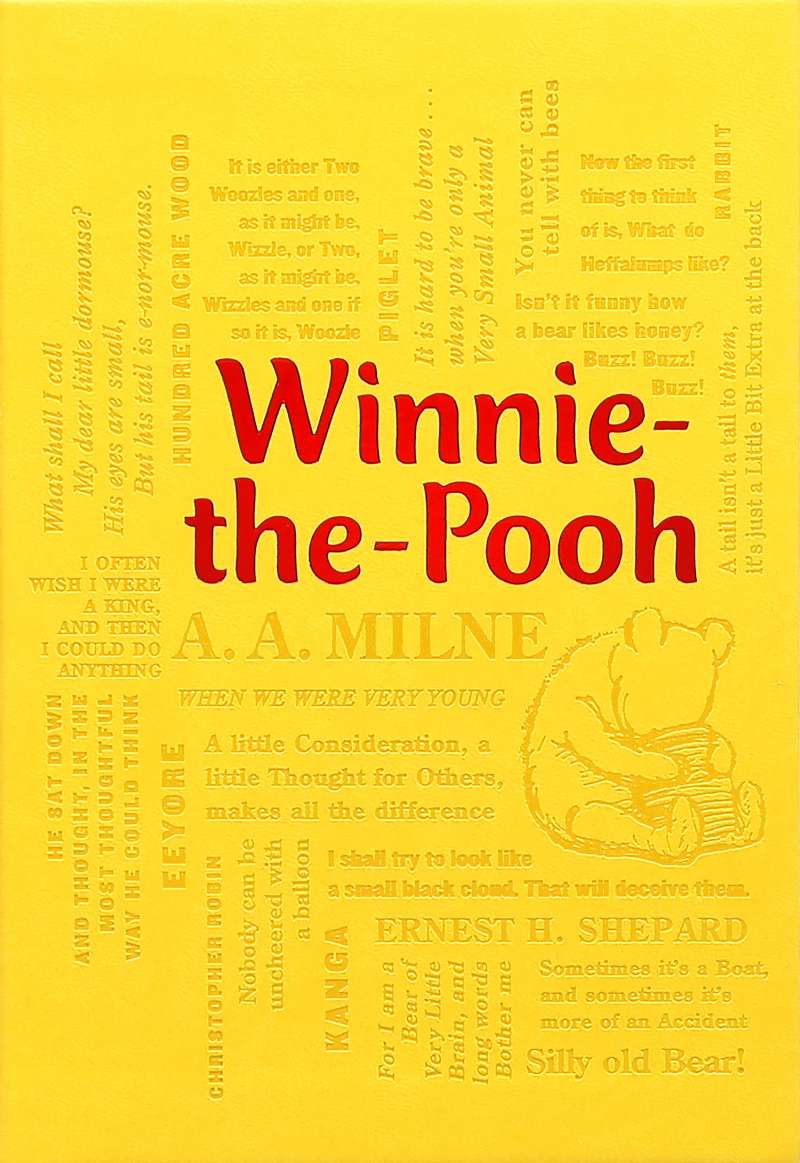A.A. Milne introduced readers to Pooh, Tigger, Rabbit, Christopher Robin, and the other residents of the Hundred Acre Wood nearly 100 years ago. Here’s a look back at a century of a cultural phenomenon.
• As indelible to the world of Pooh and crucial to its success as Milne’s words are the books’ illustrations by Ernest H. Shepard. Though he came recommended by mutual friend humorist E.V. Lucas, Milne didn’t want to hire Shepard because he didn’t think the artist’s skills as a political cartoonist would translate. Shepard so wanted the job that he proved himself worthy, creating a stack of drawings while observing Ashdown Forest (the real-life Hundred Acre Wood) and then showed up uninvited at Milne’s home nearby. He got the job.
Add the new Word Cloud Classic to your collection.
• Not only is the Hundred Acre Wood based in reality, so are some of Milne’s characters. While fighting in World War I, Canadian soldier Harry Colebourn paid $20 to a hunter to save a black bear cub, and after the armistice he donated it to the London Zoological Gardens. He named her Winnipeg, Winnie for short, after his hometown in Manitoba. Milne’s son, Christopher Robin Milne, loved visiting Winnie at the zoo and named his own stuffed bear after her in tribute.
• Most writers strive for and dream of an idea as successful as Winnie the Pooh and his forest friends. It was a bittersweet triumph for A.A. Milne. In the decade before he published his first children’s book, Milne was one of the most acclaimed and high-minded literary figures in early 20th century England, authoring 35 plays, the erudite whodunit novel The Red House Mystery, and numerous works of short, biting political satire. Pooh completely overshadowed it all, and it damaged his credibility with the literary cognoscenti.
• While Milne’s original 1926 collection Winnie-the-Pooh has since been translated into more than four dozen languages, it’s the Latin version that made history. Winnie Ille Pu, published in 1960 (and translated by Hungarian doctor Alexander Lenard), is the bestselling modern book written in a dead language. It stayed in the New York Times bestseller list for five months, prompting 21 printings and moving 125,000 copies.
• Under international copyright law, the original Winnie-the-Pooh from 1926 entered the public domain in January 2022. Characters from the book are now free to use by anyone, and the first major work in this regard is the low-budget 2023 movie Winnie-the-Pooh: Blood and Honey by filmmaker Rhys Frake-Waterfield. The plot: Grotesque, evil versions of Pooh and Piglet try to brutally murder an adult Christopher Robin, and many of his female friends.
Our volume of Winnie-the-Pooh, with a keepsake honey-yellow cover, plenty of illustrations, and Milne’s Pooh poems, is available this month from Canterbury Classics.









